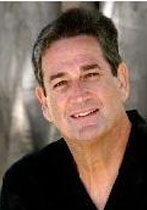
SAN DIEGO — October baseball, mixing in with the autumn leaves, early football, and the Jewish holidays, is in full swing. The game, like the soul, has eternal life—it only freezes in winter, while we gather around hot stoves of nostalgia and hope.
The skeptics love to prophesy the decline or even the end of the game. They must have missed the breathtaking 24-hour culmination of this year’s wild-card mêlée that gave new meaning to “wild.” Let them now watch basketball.
It was not long ago that an outfielder for Cleveland admitted he fictionalized his account of an alligator attack on his thumb while he was supposedly saving a child from danger. Out at home. A Kansas City player, choosing to be another poor example of good hygiene and common sense to young people, attempted to eject an ingrown toe-nail by himself, with tweezers, rather than let surgeons handle the matter. Picked off at first.
Alex Rodriguez, outwardly taciturn, bronze-like in his good looks, a matinee-idol third baseman has admitted that he had introduced performing-enhancing drugs into his body while he was with the Texas Rangers a few years ago. The issue is so brazen, so “out there,” that it was the topic of a question at President Barack Obama’s first official press conference. The president treated it as soberly as the economy, responding with stern words like “example,” “role model,” and “poor choices.” Again, the seers and the fans ask, from the bullpen far-removed, “Will the game survive?”
The game of baseball, now come around in solar relief again, is bigger than the sum of its players, no matter who they are. We who cling to its uncommon rhythm now bask in its frost-tipped final act of the year even as we dutifully glance at the concussion-inducing brutalities of the steely NFL.
Bart Giamatti, the Yale president who became the short-lived Commissioner of Baseball in 1989 (as well as its laureate) spoke and wrote lyrically of the game’s enduring magic and bucolic hold on the American imagination. (So ironic that this academic poet of our national pastime succumbed to a heart attack six months into his term, while embroiled in the Pete Rose gambling controversy). Unlike other kinds of playing fields, he saw a ball park as “an enclosed, green place” that can draw us to “the condition of paradise.”
Older fans remember true green spaces with names like Crosley, Forbes, and Candlestick. We suffered through synthetic turf facades (with migraine-inducing color uniforms) that have since been replaced by “retro” true green spaces once again clinging, like vines of memory, to the urban center, almost in contrition and surely without the hastily erased gridiron lines of football. We now smile to ourselves. We know that the game of baseball, now come around in solar relief again, is bigger than the sum of its players, no matter who they are.
Itamar Moses’ play about steroid use in the game, Back Back Back, should be seen by those who wish to examine this case-hardened social issue as more than just spectators. Yes, the use of these drugs by ball players—men who are emulated by impressionable kids—is a viral issue that infects the game, skews its hallmark record-keeping, and obviates trust. One is saddened and concerned nonetheless in contemplation of the souls that have shrunk in the midst of those artificially swollen young bodies. Yet Baseball has hardly taken a seventh-inning stretch on this crisis.
Baseball is a national thread of memory that links generations and it will survive this, even if some of the players in question do not. Record-breaking attendance testifies to our yearning for the game, even as it turns with the leaves.
*
Rabbi Kamin is a freelance writer in San Diego. He may be contacted at ben.kamin@sdjewishworld.com